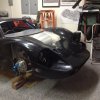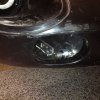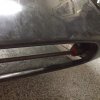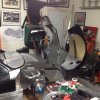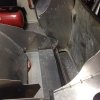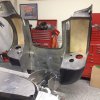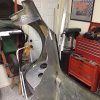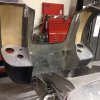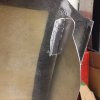D. Nye
Lifetime Supporter
More work completed this weekend. I removed the engine to complete the rear brake line install and e-brake cables. I continue to install parts as I get them, see attached pictures.
One thing many people may not know about these cars is they had no radiator cap used as a pressure relief. They used a inline pressure relief valve which is very hard to find. For those thinking of building a car like this I'll save you a few days by showing you a part number from Speedway.
Wiring is installed in the car and waiting to terminate when I'm closer to having the front and rear clips installed.
One thing many people may not know about these cars is they had no radiator cap used as a pressure relief. They used a inline pressure relief valve which is very hard to find. For those thinking of building a car like this I'll save you a few days by showing you a part number from Speedway.
Wiring is installed in the car and waiting to terminate when I'm closer to having the front and rear clips installed.




































